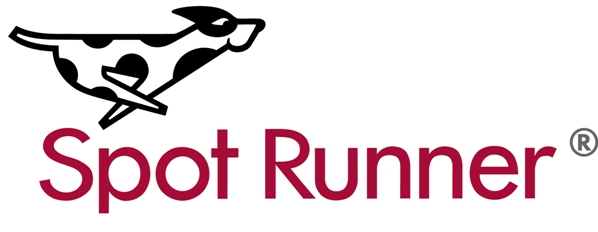What Do Advertisers Want? "Spot Runner" Knows.

Despite time-shifting and viewer erosion, television remains a $70B market, our most powerful advertising medium. That said, the steady trickle of ad dollars flowing from TV (and newspapers) to the Internet continues apace due to that platform's precision analytics and accountability. In response to this challenge, this column has profiled solutions such as Backchannelmedia and companies such as Hearst-Argyle, which nurture innovation full stop. In the past year there's been singular buzz surrounding Spot Runner, and it has only grown louder as it has raised capital ($51M most recently, from a roster including Allen & Co., CBS, Daily Mail & General Trust, Group Arnault/LVMH, Legg Mason Capital Management, Interpublic Group, WPP) and announced both major staff hires and acquisitions just in the past six months. JackMyers Media Business Report spoke exclusively with Spot Runner president John Gentry, and vice chairman and president of Media Platforms, Mark Rosenthal. Together Gentry and Rosenthal articulate Spot Runner's mission, their point of view on the state of the industry, as well their take on rivals including Google, Microsoft/Navic, and Project Canoe.
Spot Runner has been variously described as the first Internet-based ad agency, and as a cradle-to-grave advertising solution: creating, targeting, buying and selling ads. The market sees it as a company that does local ads for local business. But to have a more nuanced sense of what it has evolved into, it's helpful to begin with its point of origin. "As the media fragments," holds forth John Gentry, "and the consumer is getting their media in so many different ways, advertising has to follow that fragmentation. Spot Runner was basically founded in 2004 with the idea of fragmentation and the need to apply technology to this marketplace. At a time when there are other options to advertisers, we have to open up the floodgates and bring 'em in. When we first came up with this marketplace, we were the first company to allow [media buyers] to see traditional inventory and purchase it online on a self-serve basis. No one had ever done this." That opened up a series of conversations, he recalls, "around the landscape - media owners, agencies, and different profiles of advertisers. It was surprising to us in terms of how fast things accelerated. Timing is everything. Had we launched four years ago we would not have had the opportunity to do what we're doing. We're taking advantage of a macro trend. We didn't create it -- but we're leveraging it." Gentry recalls that before he started Spot Runner in 2005, he frequently heard this response to media fragmentation: "After I retire." But colleagues today are telling him "Now it's time. We're past the tipping point."
If Spot Runner has evolved to much more than an agency cutting local ads for local businesses, this emphasis still remains core to its mission. As such, it looks at local media across a continuum: the national advertiser who wants to reach deeply into a hyper-local market, as well as an emerging opportunity -- local advertisers who can now afford to reach their customers via commercial ad spots. One national advertiser it has successfully engaged is the Diamond Promotion Service (with its agency, JWT). "We had a solution," offers Mark Rosenthal, "to help them serve those local advertisers. Many national advertisers we work with are generally underserved. There are others who are not appropriate for a large agency relationship, or if someone has a large agency we'll work in partnership with that agency to work at the hyper-local level where agencies don't play." Rather than acting the rival to agencies, then, Rosenthal sees itself as a complement.
Spot Runner has leveraged its technology solutions to open up the marketplace and bring in more advertisers - growing it from a base of 300 to thousands. One of its recent acquisitions that seems a glove fit is Globeshooter (now the Spot Runner Production Network). The SRPN has both a library of thousands of pre-produced clips and a stable of 1,600 videographers (independent filmmakers, photographers, producers) across the country. "You have the ability to customize at the local level," says Gentry, "at a scale that's pretty powerful. So now we can take that ad we built with a national partnership and add local content. In one recent case we use the local production network's ability with a national advertiser to shoot a live response to a film at its opening, and roll it out the following week." In some cases the local advertiser may be unseasoned, but in others -- particularly if they have some online marketing experience -- they can be incredibly sophisticated with a hardcore understanding of analytics. At the end of the day, reminds Rosenthal, "What they want is leads. We help them put the right offer in front of the right consumers. We'll go right to the neighborhood you're in. We can target now at the IP level with TV, and target at the neighborhood level, more accurately and more narrowly than you can on the Web." Stepping back to envision the Big Picture, Rosenthal pronounces, "this opens up a Long Tail on both sides of the equation, not just for potential advertisers but a Long Tail for potential media sellers and advertisers."
FRENEMIES
For a moment it seemed that Spot Runner had the field unto itself. No more. A week prior to this interview Project Canoe was formally announced. A few days after, Microsoft trumpeted its acquisition of Navic. And then there is Google: Gentry doesn't see a downside to its entrance into the marketplace, just that they possess two distinct philosophical approaches: "Google says, 'We want to own the inventory. We've taken the 'You own the inventory.'" Rosenthal adds, "On the agency and the media side, one truism doesn't change: the most valuable thing media owners have is their content and the inventory within their content."
A year ago Project Canoe - a joint venture between cable's top six MSO's -- was going to sell its technology directly to marketers; instead it's pivoted, selling through programmers. While Gentry characterizes the JV as "a great example of cable companies coming together" and expressed the likelihood that Spot Runner might work with Canoe, Rosenthal opines that with this fundamental change that "they'll be leaving a bunch of dollars on the table."
Apart from the fact that Microsoft's acquisition of Navic (on 35M cable boxes) further validates the space and shows that Microsoft is dead serious about their ad business across all media types. Just as Gentry parsed a difference of approach between Spot Runner and Google, he notes that "Navic is a service to the cable operators. The cable operators control all the underlying data and inventory. The key will be for MSFT to convince cable companies that their involvement adds significant value to the product offering and does not create a strategic threat. If the cable operators are at all concerned on this front, they have the ability to remove Navic as a software vendor."
This month Jupiter Research released a study finding that TV ads are the number one driver of consumers to Web search, more so than even word of mouth. Whether or not Spot Runner remains the undisputed leader in its field, TV's reconsideration in the advertising ecosystem seems assured. Gentry isn't nostalgic when he asserts that "gone are the days of the thirty share for All My Children." Rather, he seems thrilled at the prospect of opening up the marketplace and bringing in a whole new category of advertisers.


